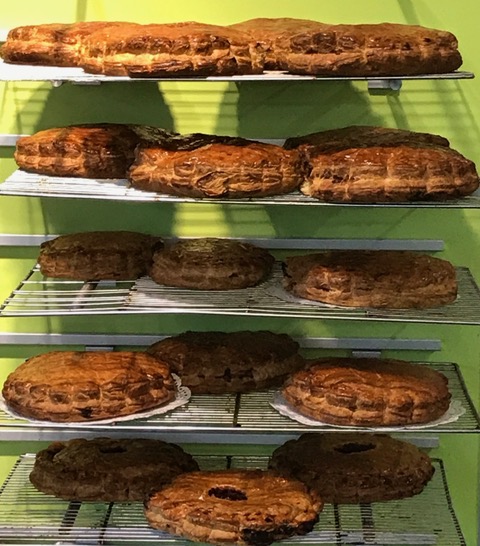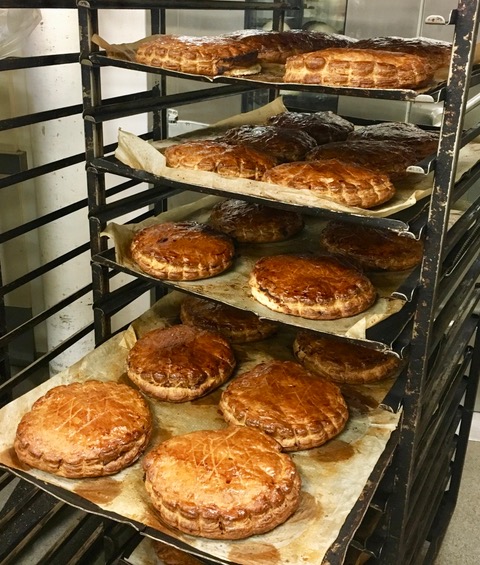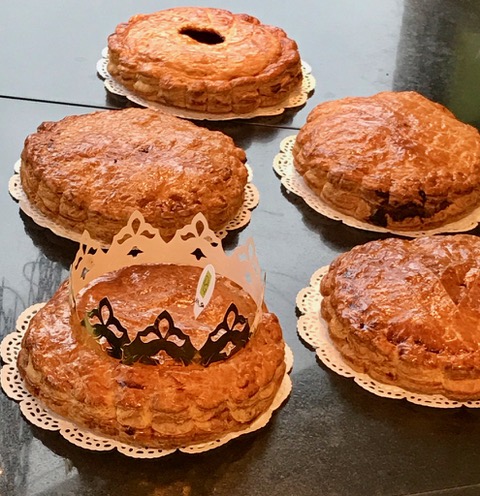Do not forget the Galette des Rois this January 6th!
It is a must at the beginning of each year: after the Christmas cougnou (bread of Jesus), it is the Galette des Rois de l’Epiphanie (King’s cake) who invites itself to the table. A tradition that goes back centuries. With, of course, the famous bean inside. On the eve of Epiphany, bakeries are packed. We know that when a tradition is linked to the taste buds and the stomach, then the Belgian always reacts accordingly. And you, have you ever tasted the famous galette des rois? Have you ever eaten a slice of this cake containing the bean? Not yet? Follow us into the workshops of the best Belgian bakers.
Tradition and origin
Originally, this celebration was a pagan festival. Sharing the cake was a tradition of Roman « Saturnalia ». Celebrations of the winter solstice were favored over sorcery and divination. During this pagan festival, the Romans « pulled the king » by hiding a bean, black or white legume, in the cake. In the Middle Ages, the king depicted in bean had to pay for a round at his table. From then on, some swallowed the bean to escape this expense. In order to prevent any escape, porcelain figurines appeared as a deterrent to the subterfuge of swallowing the bean.
For Christians, this tradition is celebrated on the day of the Epiphany. Epiphany means « manifestation » and corresponds to the day when the three wise men, guided by the light of a star, reached the stable where Jesus had been born.
The fact that one eats the cake the first Sunday of the year for some, or the 6th of January 6 for others, each with its own tradition.

Until the sixties, the Epiphany, which was a holiday in some Catholic countries, fell on January 6th. The date in itself does not matter that much, but the tradition lies in sharing the cake. Originally, one cut the galette in as many parts as of guests, plus one. The extra piece called « poor man’s share » was dedicated to the first person to show up at the door.
Recipes that change when we cross the borders
In Belgium and France, puff pastry stuffed with frangipane is the most common. Over the centuries, the tradition has been exported throughout the world, along with changes to the bean, the shape or the taste of the cake.

The Portuguese eat, for example, the Bolo Rei: a hollow brioche dough covered with raisins, crystallized fruit and sugar. The Vassilopita or Galette de Saint Basile is the Greek variant of the galette des rois. This orange-flavored cake has in it a special bean. The Greeks hide in their cake not a saint but a coin, supposed to bring luck to the one who gets it.

Thousands of cakes are being prepared in bakeries and pastry shops in the country: one hour of cooking at 165 degrees, the ancient recipe with puff pastry – frangipane remains the favorite of customers. However, innovation and creativity are center stage in Belgium, and our bakers display their inventiveness to offer their own versions of the King’s cake reinvented.
Find the bean and you’ll be the King or Queen of the day
This year, January 6th falls on a Sunday: it will be another good opportunity to meet around the family table. There is no specific age to become the king or queen, everyone uses his little tricks to try to discover the bean, but the pastry masters are infallible. With the naked eye, it is impossible to find the precious porcelain bean.

So who will be the king or the queen this year?
Translated from the French by Mauricio Ruiz



